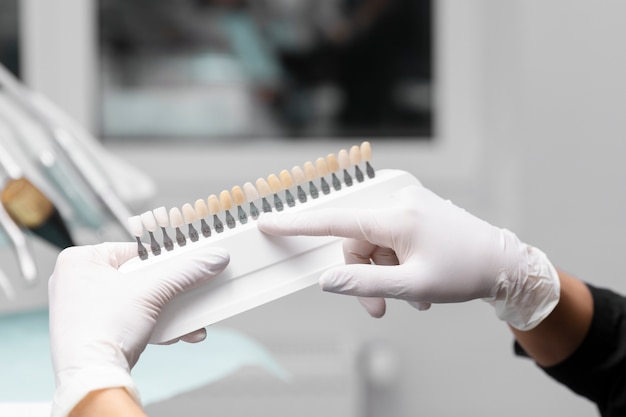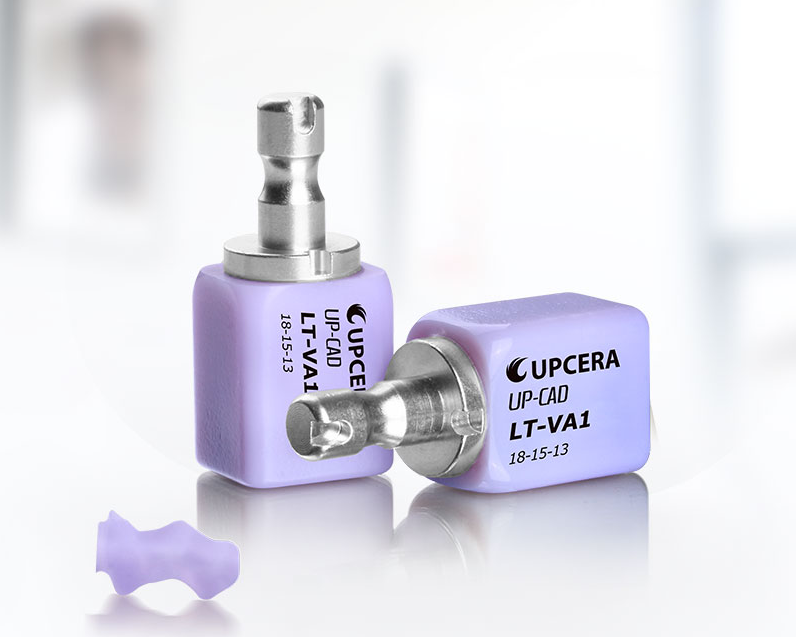Do you feel diffident due to your cracked tooth and crooked smile? Do you avoid interacting with people due to your chipped anterior tooth? A recent report revealed that about one-third of Americans are unsatisfied with their smiles. It is probably due to stained, discolored, uneven, or chipped teeth. Here we shall discuss the magical treatment options to repair your teeth and bring back your confidence!
A cracked tooth can drastically reduce your self-confidence. People involved in public dealing are extra conscious about their facial profiles. But most people avoid visiting the dentist for fear of dental pain. We have just the right thing for such patients, i.e., dental veneers. "Lithium disilicate veneers" or "ceramic veneers" is the in-thing nowadays. It's a minimally invasive procedure that can change your looks.
What Are Veneers?
Dental veneers are thin restorative materials used to enhance the look of your teeth. These tooth-colored materials are applied to the front of discolored or cracked teeth. A variety of veneers are available commercially, including ceramic (lithium disilicate veneers), composite, zirconia, etc. But lithium disilicate veneers comparatively outshine when it comes to anterior tooth surface restorations.
Why Do Veneers Become So Popular?
The glamorous appearances and radiant smiles of various social media influencers with veneers have raised beauty standards. In the beginning, dental veneers were only adorned by Hollywood celebrities. Due to increased social media awareness, everyone wants to get the perfect selfie with shining white teeth. Another reason for dental veneers’ popularity is the simple and minimally invasive procedures required.

When Is a Veneer Required?
These thin wafer-like esthetic coverings on the teeth can make you conceal various dental imperfections. Let us zoom in on a few indications of dental veneers:
1. Broken Teeth
Veneers can be beneficial when a small part of a tooth is chipped off, compromising the aesthetics. The tough and resilient properties of ceramic veneers (such as lithium disilicate veneers) make them a good option for treating accidental breakage or wear and tear of teeth. In cases where big chunks of teeth are broken, a thicker layer of veneer is applied. A dental veneer can effectively cover your tooth defect!
2. Diastema
Midline diastema or space between upper central teeth can be covered by oversized veneers. As per a study, lithium disilicate veneers offer a time-effective solution to bridge the gap between maxillary central incisors. Instead of opting for time-taking orthodontic procedures, veneers are considered a time-saving esthetic rehabilitation option.
3. Stains On Teeth
Several conditions, such as fluorosis, dentinogenetic imperfect, etc., lead to staining of the teeth, which destroys the esthetics of a person. Whitening provides a temporary solution, but the permanent resort lies in veneers. For stained teeth, a thin layer of veneer can do the trick.
4. Small Or Misshapen Teeth
Abnormally small teeth can gravely dent your appearance. The odd teeth can be easily pointed out by others. If you are conscious about your misshapen or misshaped tooth, then worry not. A dental veneer can beautifully and completely transform your tiny tooth into a presentable one.

5 Types of Dental Veneers You Should Know
You can select from a variety of dental veneers:
1. Lithium Disilicate Veneer
These minimally invasive veneers are of great importance owing to their similarities with enamel (tooth structure). The material mimics the tooth color very closely. It is thin and requires very less tooth reduction. Lithium disilicate veneers can be made using the advanced CAD/CAM procedure in a single sitting. These veneers do not suit darker color teeth due to their translucency.
2. Zirconia Veneer
Zirconia veneers are of great importance when it comes to strength. Restoration of a weak tooth is best done using zirconia veneers. It is the material of choice for patients with grinding habits. Zirconia veneers resist stains better than any other veneer. However, these highly aesthetic veneers require more tooth preparation time and are also difficult to adjust.
3. Pressed Ceramic Veneer
Ceramic veneers are known for their non-stimulating feature. The durability of these veneers makes them desirable to the patient. The strength relies on the thickness of the veneers. Pressed ceramic veneers are thicker in general, which requires greater tooth structure reduction.
4. Stacked Ceramic Veneer
Dentists can make customized veneers for a patient using this material. This type is not preferred by most professionals due to its low durability.
5. Composite Veneer
These tooth-colored veneers are less costly compared to other options. Composite veneers can only address mild issues such as slight discoloration and cracks. These veneers have a relatively shorter life when compared to other veneers. A downside of composite veneers is discoloration over time.

Where Can I Find the Best Dental Materials?
It is very important to find top-quality lithium disilicate veneers to achieve maximum results. One of the best lithium disilicate suppliers is Upcera with UP.CAD.
Apart from high precision, accuracy, durability, and translucency, this glass-ceramic has a strength of >400Mpa, which makes it an ideal choice for restorations like veneers, crowns, inlays, and onlays. UP.CAD is available in 20 shades for a perfect match. Therefore, you can get the best zirconia products to enhance the aesthetics of your teeth.
So, don’t hesitate and visit the dental material expert UPCERA!
